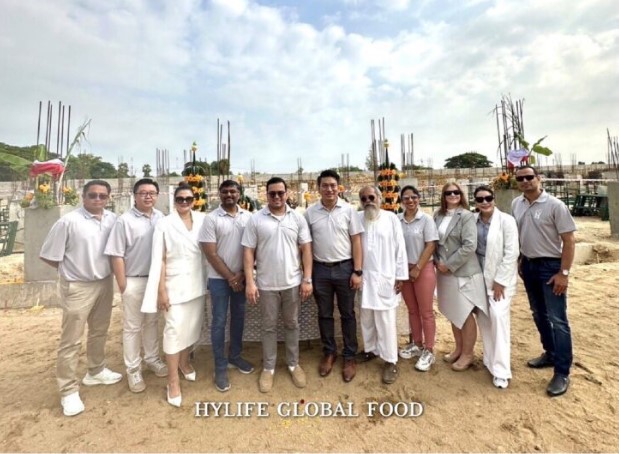Building large-scale food infrastructure—whether a state-of-the-art processing plant, an integrated cold-chain, or a nationwide logistics hub—is never just about technology or capital. It is, at its core, about leadership. The ability to transform a bold vision into a functioning system that feeds markets, supports farmers, and meets global standards requires more than financial investment. It demands foresight, collaboration, and disciplined execution.According to Mr Shubhodeep Prasanta Das, CEO of HYLIFE GROUP, here’s how leadership turns ambitious food infrastructure projects from ideas into lasting realities:
1. Vision as the North Star
Hi-Life Global Foods sets first pillar for construction of Doi Lor factory, Chiang Mai. Successful projects begin with leaders who can see beyond immediate demand. They articulate a clear, long-term vision: not just building a factory, but creating an ecosystem that raises product standards, opens export markets, and uplifts communities. This clarity of purpose helps stakeholders—from farmers to financiers—align around shared goals.
Example: A leader who frames a factory not merely as a production site but as a regional innovation hub attracts broader support, from universities to government agencies.
2. Strategic Risk-Taking
Food infrastructure projects carry high upfront costs and long payback periods. Strong leadership means balancing ambition with calculated risk—investing in modular technologies, renewable energy systems, or digital twins before they are mainstream, knowing these choices will future-proof the facility.
Leaders who embrace “risk as investment” create facilities that are resilient against changing trade rules, climate shocks, and consumer preferences.
3. Building Coalitions and Partnerships
No single entity can drive such projects alone. Effective leaders act as coalition-builders: securing financing, negotiating with regulators, aligning suppliers, and inspiring local communities.
They recognize that infrastructure isn’t only physical; it is also social. By investing in farmer training, workforce upskilling, and community engagement, leaders secure a social license to operate—a critical success factor in regions where land, water, and labor are shared resources.
4. Translating Vision into Technical Roadmaps
A visionary leader knows that ambition must be grounded in operational detail. This involves:
- Commissioning feasibility studies,
- Breaking down timelines into phased milestones,
- Integrating sustainability benchmarks into design,
- And ensuring compliance with food safety standards from day one.
By converting aspirations into step-by-step technical roadmaps, leaders prevent projects from stalling in the “dream” stage.
5. Inspiring Talent and Culture
Factories and logistics hubs are run by people, not machines. Leadership defines culture: whether employees are passive task-doers or empowered problem-solvers. Strong leaders cultivate a culture of continuous improvement, safety, and ownership.
A factory where operators are trained to run diagnostics and suggest efficiency improvements is one that scales smoothly and adapts quickly.
6. Resilience Through Adaptive Leadership
No project follows its blueprint perfectly. Supply chain delays, climate disruptions, or regulatory changes are inevitable. Here, leadership shows its true weight: the ability to adapt without losing sight of the bigger vision.
Leaders who foster agility—by encouraging cross-functional collaboration and scenario planning—ensure that setbacks become opportunities for innovation, not dead ends.
7. Embedding Sustainability as Core, Not Cosmetic
Modern food infrastructure must balance efficiency with responsibility. Strong leadership insists on green design choices—energy recovery systems, water recycling, and recyclable packaging—not as marketing tools but as cost-saving, future-ready investments.
By treating sustainability as integral, leaders future-proof their projects against shifting consumer and regulatory landscapes.
Conclusion: The Human Ingredient in Food Infrastructure
Steel, concrete, and machinery may form the skeleton of a food processing plant, but leadership is its heartbeat. Mr Shubhodeep Das inspires confidence, mobilizes resources, embed resilience, and cultivates a culture that outlasts any single individual.The journey from vision to reality in large-scale food infrastructure is rarely linear, but with strong leadership, it becomes a story of transformation—where bold ideas are translated into sustainable systems that nourish both people and economies.

